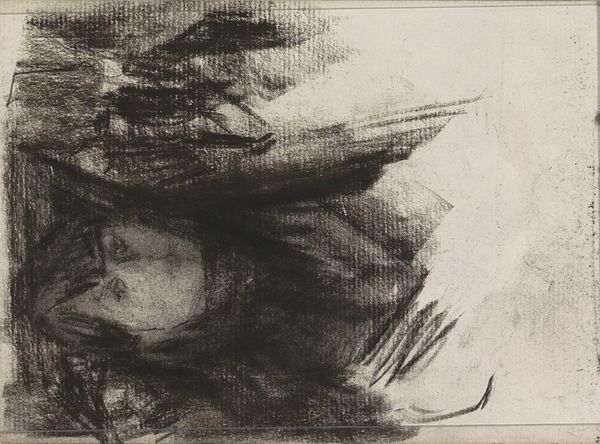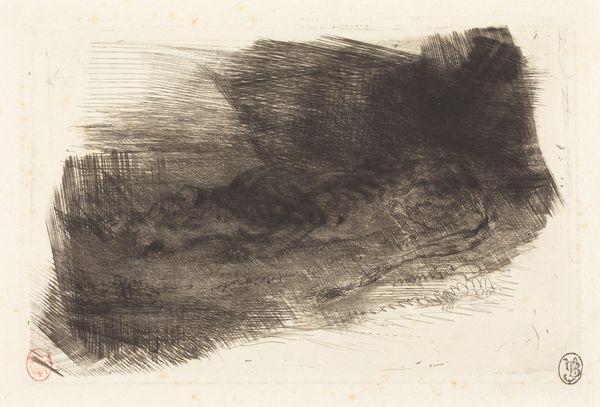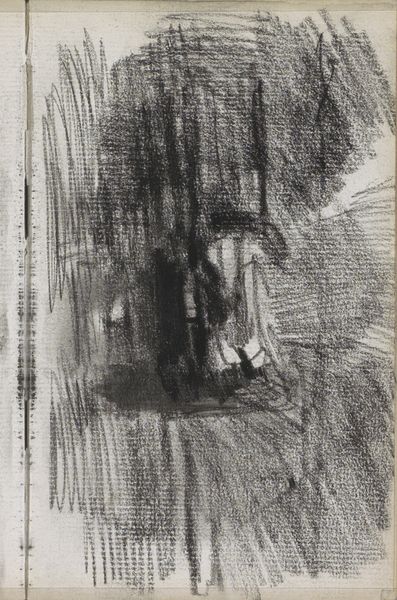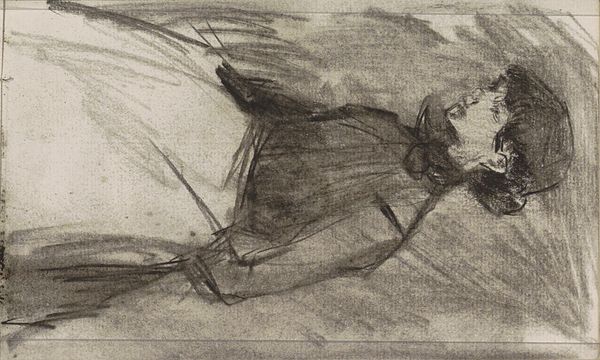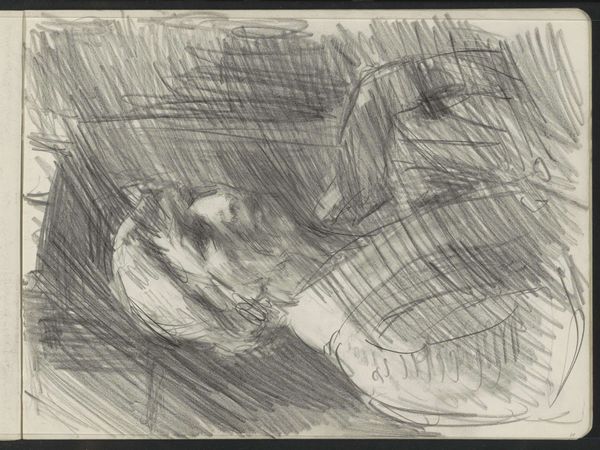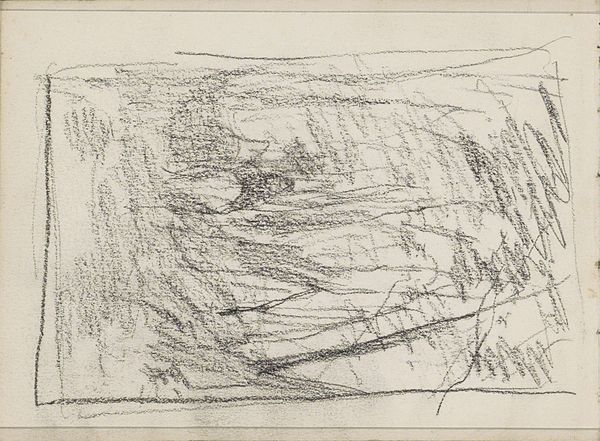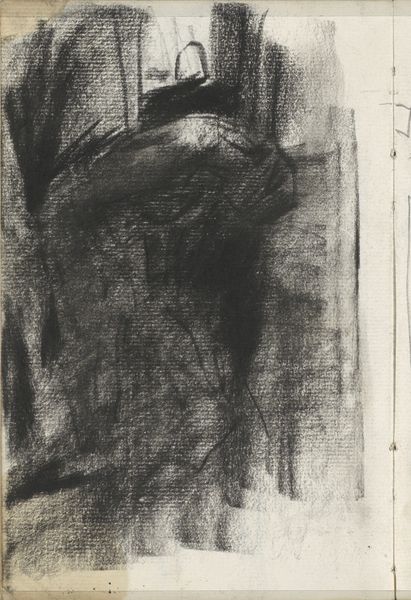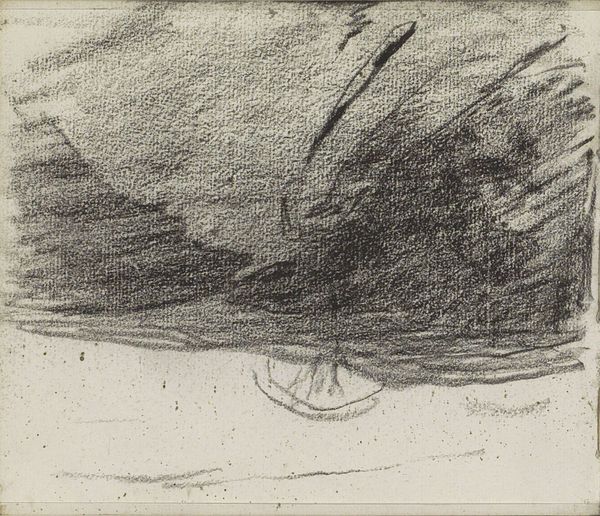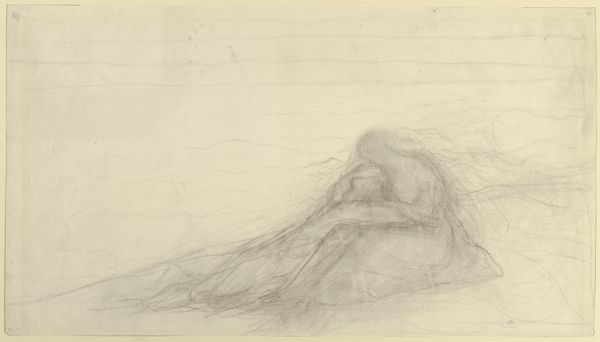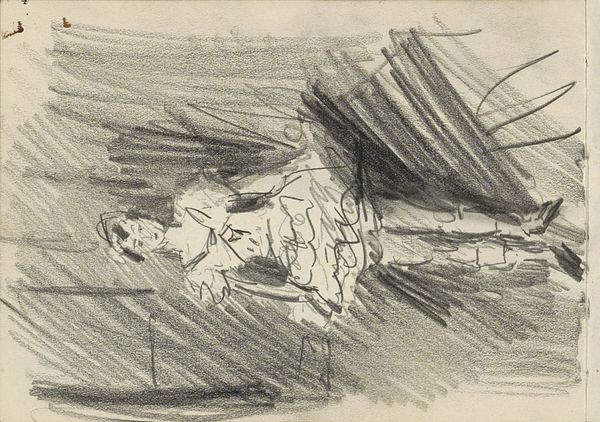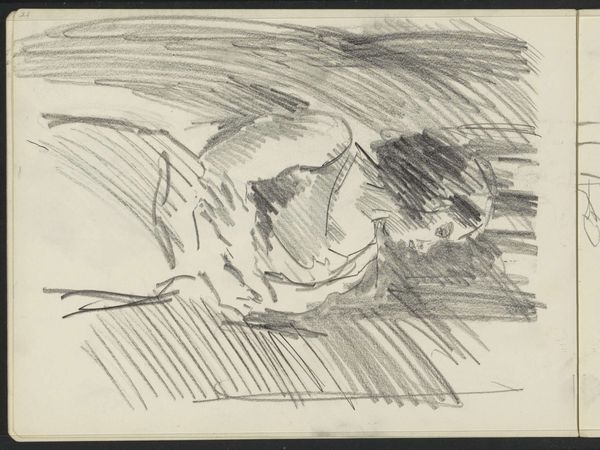
Copyright: Rijks Museum: Open Domain
Editor: This charcoal drawing, "Vrouw," by Isaac Israels, from somewhere between 1886 and 1903, really captures my attention with its moody atmosphere. The subject's face is obscured by shadow and layered charcoal strokes. How do you interpret this work within its historical context? Curator: Well, looking at the mark-making and Israels’ association with the Dutch Impressionists, we must consider the burgeoning middle class and their desire for art that reflected their own rapidly changing world. Israels often depicted modern urban life and leisure. Does this drawing, despite its shadowy and somewhat melancholic air, perhaps capture an element of that modern Dutch experience? Perhaps a moment of quiet introspection amidst bustling city life? Editor: That's a fascinating way to think about it. I was so focused on the darkness of the drawing. The obscured face could even be a comment on the anonymity one feels in a big city! Was it common for artists to portray women this way? Curator: Indeed. Consider the increasing visibility of women in public spaces during this period. There was a cultural fascination, and sometimes anxiety, surrounding this shift. This drawing might reflect a subtle power dynamic, with the artist—and by extension, the viewer—observing a woman in a moment of vulnerability. Does the roughness of the charcoal itself suggest a certain lack of polish or idealization, moving away from traditional portrayals? Editor: That makes sense. I hadn’t considered how the *materials* themselves contributed to the message. Curator: The charcoal also fits into a broader movement away from highly finished academic paintings and towards more immediate, sketch-like works. This reflects not only artistic preference, but also the evolving art market, where smaller, more affordable works found a ready audience. So, how does that change how you interpret it now? Editor: Thinking about the market forces really clarifies it. It seems more intentional and engaged with its time than I initially realized. Curator: Precisely! Hopefully you’ll consider the interplay between art, its creators and its reception a little bit more as you go forward.
Comments
No comments
Be the first to comment and join the conversation on the ultimate creative platform.
